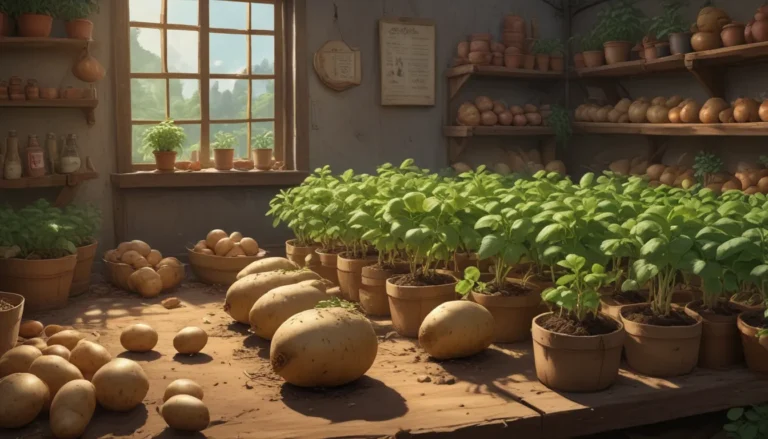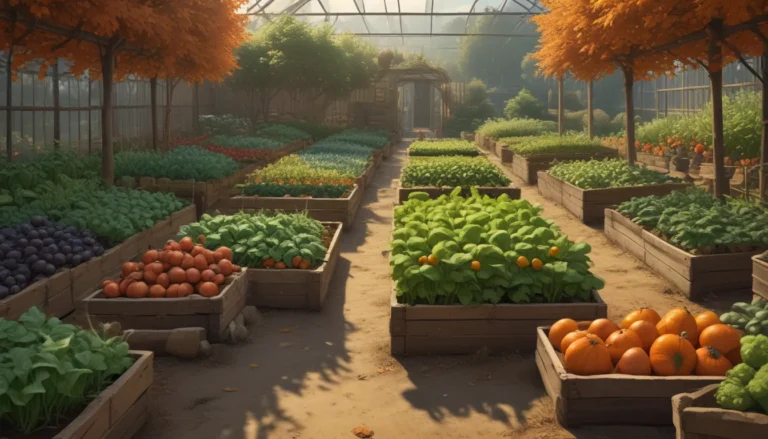A Comprehensive Guide to Growing Mushrooms Outdoors

Are you a fan of mushrooms but tired of only finding them in grocery stores or during long hikes? Have you ever considered growing your own mushrooms at home? Well, you’re in luck because cultivating mushrooms in your own backyard can be a convenient, fun, and rewarding experience. This guide will provide you with all the necessary information and know-how to grow your own fabulous fungi right in your yard. Whether you’re a seasoned mycologist or just curious about the world of mushrooms, this article is for you.
What You’ll Learn
- Mushrooms 101
- What You’ll Need
- How to Grow
- Quick Tips
- Varieties to Select
- Harvesting and Preservation Tips
- Recipes
- Quick Reference Guide
Let’s jump right in and explore the fascinating world of mushrooms!
Mushrooms 101
Before we delve into the specifics of growing mushrooms, let’s first understand the basics of fungi. While mushrooms are the fruiting bodies of fungi, not all fungi are mushrooms. There are millions of species of fungi, with only thousands known to be mushrooms. Fungi have their own unique taxonomic kingdom, distinct from plants and animals. Unlike plants, fungi have cell walls composed of chitin and rely on external sources for energy since they cannot undergo photosynthesis.
When it comes to growing mushrooms, it’s crucial to understand the difference between edible and poisonous varieties. Foraging for wild mushrooms can be risky, as mistaking a poisonous species for an edible one can have severe consequences. To ensure safety, it’s essential to carry identification guides and seek expert help when foraging. Alternatively, growing mushrooms at home provides a safe and controlled environment to cultivate your favorite varieties.
What You’ll Need
To embark on your mushroom-growing journey, you’ll need a few essential tools and supplies. One key component is spawn, which consists of cultivated mycelium that serves as the foundation for mushroom growth. Depending on your chosen species, you can select spawn plugs or sawdust spawn for propagation. Additionally, you’ll need a suitable substrate such as straw, woodchips, or logs to support mushroom growth.
Understanding the unique requirements of each mushroom species is essential for successful cultivation. By researching different varieties and their growing habits, you can select the most suitable option for your garden. Reference books such as “The Mushroom Cultivator: A Practical Guide to Growing Mushrooms at Home” by Paul Stamets and J. S. Chilton provide valuable insights into mushroom cultivation techniques.
When it comes to preparing the growing environment, ensure that the organic matter is fresh and uncontaminated. For log cultivation, select hardwoods or softwoods based on the preferences of your chosen mushroom species. Drilling holes for spawn plugs and securing them with wax ensures proper colonization and growth.
How to Grow Mushrooms
The process of growing mushrooms outdoors requires patience and attention to detail. Whether you’re using beds, logs, or stumps as your growing medium, maintaining optimal moisture levels is crucial for successful growth. Depending on the species, mushrooms can take anywhere from six months to two years to reach maturity. Regular watering and monitoring of environmental conditions are essential to support healthy fungal growth.
Harvesting mushrooms at the right stage ensures optimal flavor and texture. Before harvesting, verify the species to avoid accidental ingestion of poisonous varieties. Proper storage of harvested mushrooms in a paper bag in the refrigerator can prolong their shelf life for up to a week. Experimenting with different recipes allows you to explore the culinary versatility of homegrown mushrooms.
Quick Tips
- Maintain moisture levels in the growing substrate.
- Provide partial sun exposure as needed.
- Ensure proper ventilation for healthy growth.
Mushroom Varieties to Select
If you’re new to mushroom cultivation, choosing the right variety can be challenging. Here are three commonly recommended species to kickstart your fungiculture journey:
- Lion’s Mane: Known for its unique appearance and brain-boosting properties.
- Oyster: Versatile and easy to grow in various climates.
- Shiitake: Popular for its distinct flavor and ease of cultivation.
By selecting these varieties, you can explore different flavors and textures while honing your mushroom-growing skills.
Harvesting and Preservation Tips
Knowing when and how to harvest mushrooms is essential for preserving their quality. Avoid letting the caps release spores, as it can affect the taste and edibility of the mushrooms. Gentle twisting and pulling are effective methods for harvesting mushrooms without damaging them. Proper storage in a paper bag in the refrigerator can extend the shelf life of harvested mushrooms.
Recipes
Once you’ve harvested your mushrooms, it’s time to experiment with delicious recipes. From broiled salmon with shiitake mushrooms to flavorful sauteed mushrooms, the culinary possibilities are endless. Try out different recipes to showcase the unique flavors of your homegrown mushrooms.
Quick Reference Guide
For a quick overview of mushroom cultivation essentials, refer to the following guide:
- Organism Type: Edible fungi
- Propagation: Spawn (plugs or sawdust)
- Native to: Worldwide
- Substrate: Logs, sawdust, straw, woodchips
- Hardiness (USDA Zones): 2-12, depending on species
- Maintenance: Moderate
- Time to Maturity: 6 months – 2 years
- Water Needs: High
- Exposure: Part shade
- Subkingdom: Dikarya
- Phyla: Ascomycota, Basidiomycota
Make Room for Some ‘Shrooms
Incorporating mushrooms into your garden can enhance your culinary experience and provide a sustainable source of homegrown food. Experimenting with different varieties and cultivation methods allows you to deepen your appreciation for fungi. Share your mushroom-growing adventures and favorite recipes in the comments below. Happy growing!
Enhance your gardening journey with our growing guides for vegetables that complement mushrooms such as:
– How to Grow Asparagus Like a Pro
– How to Plant and Grow Onions
– How to Plant and Grow Peas
Exploring the world of mushroom cultivation opens up a new realm of culinary possibilities in your garden. Whether you’re a novice or experienced grower, cultivating mushrooms outdoors can be a rewarding and enriching experience. Happy growing!





